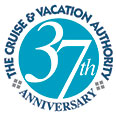So what's the big deal about a Panama Canal cruise?
Experience lush rain forests, unique ports and an engineering wonder up close
A Panama Canal cruise offers an adventure unlike your typical fun-in-the-sun vacation. Your path is a storied waterway that cuts through the Continental Divide, using a feat of hydrotechnology to raise cruise ships as large as 90,000 tons 85 feet above sea level. You cruise through a near Garden of Eden - lush, tropical rain forests and untamed jungles in the heart of Central America, home to varied wildlife and fascinating cultures. And Panama Canal cruise itineraries promise gorgeous, exotic ports of call.
A certain historical mystique permeates the murky waters of the Panama Canal, often touted as the "Eighth Wonder of the World." Construction of this modern marvel claimed a reported 25,000 lives before its completion in 1914. The French were the first to attempt the building of a canal in 1880, but plagued by yellow fever, malaria and frequent landslides, they were forced to abandon the project.
The United States, led by Teddy Roosevelt, took over in 1904, seeking global power through control of the maritime passage. The Americans achieved success by eradicating disease and implementing new engineering techniques. The building of the Panama Canal cost $387 million, and its large-scale engineering superiority is still unmatched today.
There are two ways for cruisers to experience the Panama Canal - by full transit or partial transit. Full transits cruise the entire length of the canal, departing from either the Atlantic or Pacific coasts. Cruisers are taken through all three sets of Panama Canal locks - the Gatun, Pedro Miguel and Miraflores locks - which raise cruise ships above sea level through a series of water chambers and the simple use of gravity. Full transit of the canal is eight hours and 50 miles of breathtaking vistas of the region's rugged rain forests.
On a partial transit cruise, ships often depart from the Atlantic or Gulf coasts and enter the Panama Canal on the Caribbean side. The vessel passes through the Gatun Locks, then turns around in Gatun Lake, the world's largest man-made lake, and exits the canal the same way it came in.
"Partial transits are a more affordable way to cruise the Panama Canal." Because partial transits depart from and return to the same port, cruise vacationers can save money by purchasing round-trip air tickets rather than the two one-way tickets required for full transits. Some travelers may also have the option of driving to the port of embarkation.
Time is another factor to consider when choosing a Panama Canal cruise. Full transits are at least 14-day affairs, while partial transits typically are shorter. If you're on a budget, whether of time or money, partial transits are the way to go.
Some small-ship cruises can be as short as one week, and full-transit cruises can extend to the 30-day mark or longer. Panama Canal itineraries are offered fall through spring, but the best time to cruise is December through April, during the dry season. Cruises depart from a variety of domestic ports, usually in South Florida or Southern California; Celebrity Cruises' Galaxy leaves from Galveston, TX. Currently, ocean liners sailing the canal range from four-star vessels to six-star, all-suite luxury ships. As a general rule, one should book early, six months or more, to get the best cabin choices and prices.
The truly adventurous can opt for a small-ship cruise into the Panama Canal. Cruise West and Clipper Cruise Lines offer full transits on ships that hold less than 150 passengers. These smaller boats venture where large ships cannot, allowing for the intimate and often spontaneous exploration of secluded waters, tiny ports and narrow channels. You can do things on these ships that you just can't do on mainstream cruises.
On a small-ship cruise, passengers sail close to the dense jungles of Panama and Costa Rica, often catching glimpses of three-toed sloths or white-faced capuchin monkeys. These cruises also feature on-board educational lectures on the region's culture and wildlife, while small excursion craft allow you to visit isolated Embera Indian villages or tucked-away islets.
Whether you choose a large or small vessel in which to cruise the canal, each Panama Canal itinerary features exotic ports. On a Panama Canal cruise, you're really going into the heart of Central America.
At the northern gateway to the Panama Canal lies the swampy island city of Colon, Panama. From here, passengers can take a tour to see the canal locks up close. Nearby are the colonial Spanish forts of San Lorenzo and Portobelo, built during the 16th century. Puerto Limon, Costa Rica, is another popular port of call, where rain forest and jungle intertwine. This historical city also gave birth to Costa Rica's banana trade. Here, you can ride an aerial tram through the rain forest canopy, where orchids, ferns and multitudes of plant species mingle.
On the Pacific coast of Costa Rica is Puntarenas, where flora and fauna abound. Set out on an adventure to the Guacalillo Estuary at the mouth of the Tarcoles River for wildlife sightings, often of mangrove hummingbirds, egrets and crocodiles.
The allure of the Panama Canal lies in these far-south locales and other off-the-beaten-path ports. Some itineraries also include Huatulco, Mexico, home of golden beaches and tucked-away coves on the Mexican Riviera, or Cartagena, Colombia, an ancient Spanish walled city and former hub of New World maritime traffic.
Panama Canal cruises are the ultimate in exotic adventure. Offering a breadth of unique experiences where you can witness natural and man-made wonders, they allow you to soak up the splendor of a true tropical paradise.

With each issue of Ultimate Experiences Online, you’ll enjoy a collection of articles, slideshows and videos that we will inspire you to make your travel dreams a reality.

To help you discover ways to explore the world, we're pleased to share our The Travel Magazine Online.
 Save money and escape the crowds. Hot Deals and multi-port packages. Savings of up to 50%!
Save money and escape the crowds. Hot Deals and multi-port packages. Savings of up to 50%!

Our free app that allows you to carry all of the destination information you need while traveling, right in your pocket!

We recommend optional travel insurance that protects you in the event of having to cancel your trip avoiding travel vendor cancellation policies and more!





